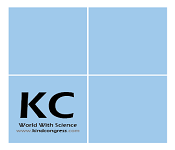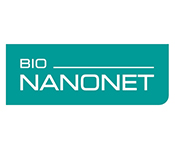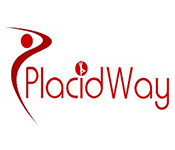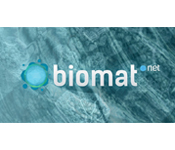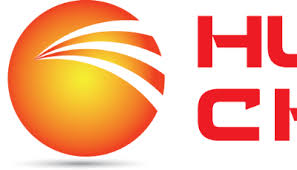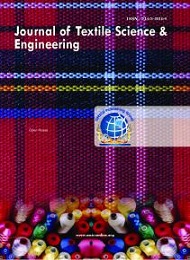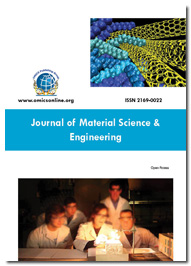Theme: Understanding the Dynamics of Polymers and Nanotechnology connecting Fundamentals to Broad applications
Polymer Catalysis 2018
We welcome every one of the members from everywhere throughout the world to go to “International Conference on Polymerization Catalysis Flexible Polymer and Nanotechnology'' amid September 06-07, 2018 in Dubai, UAE. Which incorporates incite keynote introductions, Oral talks, Poster introductions and Exhibitions.
While much research and item advancement in industry is item arranged, it requires researchers with a grip of the establishments of science, innovativeness, the capacity to cooperate, and appreciate seeing the viable uses of their work. Polymer Nanotechnology 2018 covers every one of the parts of related field analysts, the gathering of Scientists, and understudies from all edges of the globe, meet up to examine about polymer science and its advances. Every session of the gathering will be incorporated with master addresses, blurb and exchanges, go along with us to plan reasonable improvement forms, developments by which and how these techniques drive new approaches, propels the business and human wellbeing security. We are happy to welcome you in the interest of sorting out board of trustees to go along with us, where you are the chief for future.
Track 1: Nanotechnology for Photovoltaics and Supercapacitors
With the developing risk of contamination, an unnatural weather change, and vitality emergencies caused by our solid reliance on the diminishing supply of nonrenewable petroleum products, the look for spotless and inexhaustible elective vitality assets is one of the most earnest difficulties to the feasible improvement of human civilization. notwithstanding the vitality assets which drive human culture today, for example, oil, coal, water driven power, flammable gas, wind control, and atomic plants, a focal point of dynamic innovative work is the investigation of option maintainable vitality assets, for example, sunlight based energy, geothermal power, biomass/biofuel, and hydrogen energy. Although there is potential for the utilization of these elective hotspots for the substantial scale supply of intensity, the vitality that can be gathered from these sources is still principally utilized for little scale controlling applications. An emotional mechanical pattern today is the quick development of individual and versatile hardware for applications in correspondence, medicinal services, and natural observing Independently, the power utilization of these gadgets is low; be that as it may, the quantity of such gadgets conveyed can be enormous. At present, the controlling of electronic gadgets still depends on rechargeable batteries. The measure of batteries required increments in extent with the expansion in the number and thickness of portable electronic gadgets utilized and may bring about difficulties for reusing and substitution of the batteries
Track 2: Nanogenerators and Piezoelectronics
The nanogenerators have some components inside these whose structures are similar to nanowire made up of a Piezoelectric ceramic material. Piezoelectric materials can generate an electric current just by being bent. In a space less than the width of a human hair hundreds of nanowires can be packed side by side. At this scale and with the combined flexibility of the nanogenerator's components, even the least movement can generate current. Nanogenerators are small in size but increasingly powerful as well as responsive.
Track 3: Nanocatalysis and Application in Chemical Industry
Both in homogeneous and heterogeneous catalysis, the field of nanocatalysis has undergone an explosive growth during the past decade. Since nanoparticles have a large surface-to-volume ratio compared to bulk materials, they are attractive candidates for use as catalysts. The main aim of this research is to produce catalysts with low energy consumption,100 per cent selectivity and long lifetime which includes the use of nanomaterials as catalysts for a variety of catalysis applications. Nanoparticles of semiconductors, metals, oxides and other compounds have been widely used for important chemical reactions.
Track 4: Polymer Material Science and Catalyst Engineering
polymer blend is a generally new (third) stream that has turned acids, bases, radical species, et cetera, utilized since 1920s, and a moment stream utilizing impetuses of progress metals and uncommon metals since 1950s. Enzymatic catalysis is earth benevolent, yet permits the amalgamation of different normal and unnatural polymers that have all around characterized structures with controlled stereochemistry, regioselectivity, and chemoselectivity. This survey will concentrate on late advancements in compound catalyzed polymer blend in the zones of polysaccharides, polyesters, and polyaromatics, and also polymer alteration.
Track 5: Nanotechnology in Oil and gas Application
The light vaporous hydrocarbons created by synergist breaking are exceptionally unsaturated and are normally changed over into high-octane gas segments in polymerization or alkylation forms. In polymerization, the light olefins propylene and butylene are prompted to consolidate, or polymerize, into particles of a few times their unique atomic weight. The impetuses utilized comprise of phosphoric corrosive on pellets of kieselguhr, a permeable sedimentary shake. High weights, on the request of 30 to 75 bars (3 to 7.5 MPa), or 400 to 1,100 psi, are required at temperatures running from 175 to 230 °C (350 to 450 °F). Polymer fuels got from propylene and butylene have octane numbers over 90. The alkylation response additionally accomplishes a more drawn out chain particle by the mix of two littler atoms, one being an olefin and the other an isoparaffin (normally isobutane). Amid World War II, alkylation turned into the principle procedure for the fabricate of isooctane, an essential part in the mixing of avionics fuel. Two alkylation forms utilized in the business depend on various corrosive frameworks as impetuses. In sulfuric corrosive alkylation, concentrated sulfuric corrosive of 98 percent immaculateness fills in as the impetus for a response that is completed at 2 to 7 °C (35 to 45 °F). Refrigeration is vital as a result of the warmth created by the response. The octane quantities of the alkylates delivered run from 85 to 95.
Track 6: Advanced Nanomaterials
The nanomaterial is the basic part of the nanoscience and nanotechnology. The complex functions of nanomaterials in systems require further improvement in the preparation and modification of nanomaterials. Such advanced nanomaterials have attracted a massive interest during recent years and will form the basis for further development in this area. The control of composition, size, shape, and morphology of Nanomaterials and Nanoparticles is a necessary foundation for the development and application of Nanoscale devices in all over the world. These are the critical enablers that allow mankind to exploit the ultimate technological capabilities of magnetic, electronic, mechanical and biological systems. Magnetic Nanodevices, Nano-biosensors, Nanoswitches, Optical Biosensors. Nanodevices will ultimately have an enormous impact on our ability to enhance energy conversion, produce food, control pollution, and improve human health and longevity.
Track 7: Macro Polymer and Functional Polymer
Polymer portrayal is the explanatory branch of polymer science. The teach is worried about the portrayal of polymeric materials on an assortment of levels. The portrayal commonly has as an objective to enhance the execution of the material. In that capacity, numerous portrayal systems ought to in a perfect world be connected to the attractive properties of the material, for example, quality, impermeability, warm security, and optical properties.
Track 8: Metallocene Catalyst
A post-metallocene impetus is a sort of impetus for the polymerization of olefin, i.e. the mechanical generation of the most widely recognized plastics. "Post-metallocene" alludes to a class of homogeneous impetuses that are not metallocenes. This zone has pulled in much consideration in light of fact that the market for polyethylene, polypropylene, and related copolymers is extensive.
Track 9: Polymer in Ceramics
Polymer artistic materials are inorganic-natural composites comprising of clay fillers and a lattice of natural polymers – especially polysiloxanes . The arrangement of polymer earthenware production depends on warm curing of functionalized tars having the capacity to frame clay like structures in the aftereffect of warmth treatment over 200°C.Polymer-pottery can be handled by an expansive assortment of plastic shaping strategies like high weight infusion trim or extrusion.Polymer-artistic composites are portrayed by high warm soundness (conceivable administration temperatures over 600°C), low shrinkage, high strength of shape, and high dimensional exactness. Pertinent utilization properties (e.g. electric al conductivity, warm conductivity, dielectric al conductivity) and handling parameters can be balanced by the decision of proper practical fillers, cover frameworks, and plasticizing additives.The utilization of polymer-fired materials could pay off if a cost productive simple preparing of the material incorporating plastic shaping strategies to acknowledge complex formed parts are required and the warm soundness of standard materials like plastics does not suffice.Various electro-specialized segments subjected to overwhelming warm load could be created in view of polymer-artistic composites. The assorted variety of use of polymer-pottery could likewise be shown by the advancement of joining materials and frothed materials displaying high warm solidness and great warm confinement capacity.
Track 10: Quantum Dots and Nano-Magnetism
Quantum Dots and Magnetic Nanoparticles have lots of applications in analytical methods. Quantum Dots are semiconductor nanoparticles whose electronic energy levels are considerably controlled by the particle dimensions. This control comes about due to quantum confinement.QDs are useful as an analytical tool due to its unique optical properties. These optical properties consist of narrow emission spectra, broad absorbance spectra, emission wavelength which is adjustable by adjusting the size of the particle, high quantum efficiency and low photobleaching rates.MNPs are made of magnetite (Fe3O4) or maghemite (γâ€Fe2O3). These materials are typically superparamagnetic in the nanoscale range. The magnetic properties of these nanomaterials allow them to be manipulated by magnetic fields. the relatively low toxicity of iron oxides allows for their use in vivo applications.
Track 11: Nanotechnology in Construction industry
For quite a few years various examinations on the improvement of polymer-based development materials for structural building applications have been directed. As of late, the polymer -based materials are chiefly arranged into three gatherings: (1) manufactured fiber-fortified (bond) composites (FRC), (2) fiber-strengthened polymer (FRP), and (3) polymer concrete. The FRC incorporates a few sorts of broken filaments made of polypropylene, polyethylene, polyvinyl liquor, polyester, et cetera. It can be viably embraced for common structures and structures to enhance post cracking pliable execution, plastic shrinkage break protection, imperviousness to fire (counteracting spalling), and solidness of cement. Moreover, a few kinds of FRPs that is FRP fortifying bar, FRP sheet, and showered FRP, have been considered for fortifying and reinforcing common structures. Notwithstanding their numerous focal points, for example, a noncorrosive nature, high particular quality, and electromagnetic impartiality, because of a few disadvantages of FRPs for example, high fragility, poor imperviousness to fire, powerless bond attributes, and inordinate crawl, their more extensive reasonable applications have not happened. Finally, polymer concrete has as of late picked up consideration from architects to accomplish incredible mechanical properties and solidness.
Track 12: Crystallographic and Morphology Studies of Polymers by Nuclear Magnetic Resonance (NMR) Spectroscopy, SEM, Detectors, TEM
The line shapes have a trademark appearance without atomic movement, and the adjustments fit as a fiddle because of the sub-atomic elements rely upon the sufficiency and recurrence of sub-atomic movement. In the event that the movement has an extensive sufficiency and an almost isotropic rakish dispersion (with respect to polymers over their Tg), at that point arrangement like spectra are gotten. Deuterium NMR is frequently used to contemplate polymer flow, in light of the fact that the unwinding is commanded by the quadrupolar coupling.
Track 13: Polymer Nanotechnology (Thin Film Flexible Electronics, Energy Application)
Nano technology have added to the comprehension of the structure and elements of different polymers covering manufactured to supramolecular and regular frameworks as detailed in the previous decade. Viewpoints incorporate the pressing, compliance, chain direction, concoction responses, and sub-atomic flow of engineered polymers, vitality stockpiling materials, supramolecular polymers, and normal polymers. The entire scope of all polymer frameworks is past our extension, in any case, the particular frameworks depicted are dealt with as remarkable cases to exhibit the current advance in the field.polymer has produced much intrigue globally for its potential to solve a wide assortment of industry issue in nanotechnology and gadgets. A few dozen organizations are currently outlining and offering polymer units all around for a wide assortment of expanding markets. A few research focuses are likewise enhancing and creating polymer thin film, polymer basic investigations and polymer techniques for preparation and application.As of late more noteworthy concentration has been put upon polymer thin movies which plays an progressively critical part in mechanical applications extending from coatings, glues also, lithography to natural light discharging diodes and different natural material based gadgets, counting sensors and identifiers
Track 14: Polymers for Catalysis and Energy Devices
Catalysis by polymers is the new seriously creating field of science. Polymer catalysis has turned into a free and flourishing branch of science. Broad advancement of this field is credited to progress accomplished in blend and examination of supposed practical polymers and additionally to progress achieved in homogeneous, metal complex catalysis. The productive collaboration of these two bearings, to be specific the obsession of homogeneous impetuses or progress metal mixes on natural polymers, has prompted the clever thought of heterogenization of homogeneous metal complex impetuses.
Track 15: Composite Polymeric Materials
To orchestrate a nanoporous, adaptable and conductive polymer composite by changing over a solitary polymer stage grid to two periods of interpenetrating polymer systems. Fundamentally, the permeable polymer composite not just introduces ultra-high mechanical properties, sturdiness and conductive steadiness, yet in addition improves the capacitance by 7-overlap.
Track 16: Flexible Polymer (Graphene,CNT,Nanotechnology,SEM)
The primary difficulties in the following decades will be the developing populace, the convergence of individuals in broad urban focuses, and globalization, also, the normal difference in atmosphere. Subsequently, the enormous (specialized) points for human kind later will be vitality and assets, sustenance, wellbeing, portability and framework and correspondence. What's more, there is presumably that polymers will assume a key part in finding fruitful courses in taking care of these challenges. Polymers will be the material of the new thousand years and the creation of polymeric parts – green, maintainable, vitality efficient, superb, low-estimated, and so forth – will ensure the accessibility of the best arrangements everywhere throughout the world. Where would we be able to see the advances: in protecting material for extraordinary sparing. The demand for user-friendly electronics has rapidly increased people want devices that perform well and are convenient to use flexible electrodes. Therefore, many research groups have studied flexible or wearable electronics to demonstrate user-friendly electronics that can be conformally mounted on various objects with non-planar surfaces.1, 2 Among these studies, displays are the most typical visualization devices, and flexible or wearable displays have also been studied to improve convenience-of-use, such as weight reduction, improved portability, and robustness.3, 4 Because wearable displays have to tolerate the deformation degree of human skin (with a tensile strain of approximately 20–30%),5, 6 these wearable displays and the electronics associated with them must be able to stretch.
Track 17: Bio Based Polymer
Biodegradable polymers, and in addition polymers delivered from sustainable feedstocks, are pulling in expanding interests as conceivable substitutes for traditional plastics: a higher vitality effectiveness in union and preparing steps must be consistently sought after to amplify the natural ecological advantages brought by this class of materials. Microwave helped natural amalgamation (MAOS) is these days a noteworthy point in green science and an awesome (yet rising) number of papers would already be able to be discovered that report striking favorable circumstances over traditional warm warming. Regardless microwave (MW) vitality sources are as of late being picked likewise for a few polymerization responses
Track 18: Liquid Crystalline Flexible Polymer
As of late, permeable coordination polymers (PCPs), the properties of which are promising in science and for applications in catalysis, capacity, particle trade and partition, and additionally zeolites have been broadly examined. Moreover, PCPs have auxiliary consistency, high phttps://polymer-catalysis.conferenceseries.com/registration.phporosity, high surface territory, and designability bringing about a more prominent potential for application than zeolite or enacted carbon. The word polymer is utilized in light of fact that they expand an endless structure built of coordination obligations of metal particles and natural ligands.
Track 19: Electrical and Temperature Stereochemistry Parameter for flexible polymer
PVC films are statically charged because of their low electrical conductivity. This makes fire risk amid its taking care of. Conductive materials are added to movies to keep this. In the present examination it was expected to get ready PVC-copper composite movies by sol gel procedure and portray the readied films. It was intended to increment .the electrical conductivity of the movies by including copper powder. Be that as it may, the copper particles settled down to base as opposed to shaping a conductive system that covers the entire cross area. In this way at the film cross section a plastic upper stage and a copper rich lower stage were available. The film did not direct power because of this uneven dispersion. The base volumetric and surface resistivity of the movies were at the request of 109 ohm-cm and 1010ohm square respectively.
Track 20: Polymer Market
The worldwide industry's head hotspot for recorded and conjecture estimating, compound gives local and worldwide market warning administrations that convey a thorough perspective of world markets for plastics and polymers. Our experts acquire value data from talks with key market players and give week by week or month to month reports contingent on the administration. You additionally get boundless access to our cost and financial aspects database and the Chemical Economy and Energy Overview Market Report - a month to month issue loaded with worldwide monetary updates, quarterly territorial financial news, and profitable unrefined petroleum/flammable gas information.
Track 21: Polymerization in pharmaceutical industry
Usage of nanotechnology in electronic component is called Nanoelectronics which includes design, construction and applications of electronic circuits and devices on a nanometer scale. Nanoelectronics increases the capabilities of electronic devices such as improvising the display screens on electronics devices by reducing the weight and thickness of the screens and decreasing the consumption of power. Nanosensors carry information about nanoparticles. Many scientific breakthroughs in Nanotechnology has been contributed by Nanosensors. Different type of sensors are built from nanomaterials to detect a range of chemical vapours, to sense bacteria or viruses, to detect single molecules to help pharmaceutical companies in the production of drugs. Latest specialist ventures around 18 in gadgets ventures and 22 in a material are in the procedure, a yearly spending plan of $20,000 million is been supported by Nanotechnology organizations. The applications include in Nano gadgets, Reasonable and renewable vitality, common and mechanical designing, marine and resistance
Track 23: Nanopolymer, Nanotubes and Nanoporous Material
A carbon nanotube is a tube-shaped material which is made of carbon with a diameter measuring on the nanometer scale. These are unique because of the strong bonding between the atoms. Recently the most popular use for carbon nanotubes is in structural reinforcement. Approaches are being made using carbon nanotubes to extract power from sunlight and even as a heat source. Carbon nanotubes are unique in that they are thermally conductive along their length but not across the tube itself. This lets carbon nanotubes play a role on both sides of thermal insulation. Carbon nanotubes are also electrically conductive, which have potential to make an extremely cost-effective replacement for metal wires. The semiconducting properties of nanotubes make them candidates for the next generation of computer chips
Track 24: Nanobiotechnology and Nanomedicine
The application of nanotechnology for the prevention and treatment of diseases is known as Nanomedicine which belongs to the branch of medicine. Biocompatible nanoparticles and nanorobots are applicable to diagnosis, delivery and sensing purposes in a living organism. Particles in nanoscale have been used in maximum number to improve the drug accumulation, internalization and therapeutic efficacy. The physicochemical and biological properties of the nanoparticles can also be finely adjusted by tailoring their chemical properties, sizes, shapes, structures, morphologies and surface properties. understanding the issues related to toxicity and environmental impact of nanoscale materials is Current problems for nanomedicine.
Track 23: Nanotechnology in Catalysis
Both in homogeneous and heterogeneous catalysis, the field of nanocatalysis has undergone an explosive growth during the past decade. Since nanoparticles have a large surface-to-volume ratio compared to bulk materials, they are attractive candidates for use as catalysts. The main aim of this research is to produce catalysts with low energy consumption,100 per cent selectivity and long lifetime which includes the use of nanomaterials as catalysts for a variety of catalysis applications. Nanoparticles of semiconductors, metals, oxides and other compounds have been widely used for important chemical reactions.
Track 25: Nanotechnology in Tissue and Regeneration
There is a direct communication between the CNS and brain which is established by neural interfaces. In natural interface different kind of biomedical device is implemented in a human body that already have been developed to translate the brain processes into specific actions by the control of external devices. These interfaces develop a neurophysiological understanding and provide a clinical means for treatment of neurological symptoms and diseases. These could help increase the independence of disable people by which they can control various devices with their thoughts – not surprisingly, the other candidate for early adoption of this technology is the Military. Neural Interfaces or brain-machine interfaces (BMIs) can preserve the function of impaired neuronal tissues by translating nervous system signals into quantities that can be computationally understood.
Dubai Polymer Industries L.L.C is a standout amongst the most focused makers of based items like Water Tanks, PVC Pipes and Road Barriers in U.A.E. Dubai Polymer Industries L.L.C it furnished with the most recent innovation and we can approach innovation and experienced work force covering an extensive variety of aptitudes identifying with plastic and their applications. Dubai polymer enterprises in augmenting its interests as well as expanding its ability to create top quality items, which follow all real universal and neighborhood standards .With the assistance of most refined machines and the dedication and genuineness of our qualified and all around experienced staff and advancement in the plan and extremely strict quality confirmation, the organization can help its clients with specialized counsel and in addition conference on the item improvement. The aphorism of the organization is to guarantee greatest quality and best at a practical cost. The speculation is required to make about 1,000 employments amid crest development and 100 high-gifted, full-time operations occupations amid operations .Dow as of now works a coatings office in the Middle East, which is situated at Jebel Ali in Dubai .The proposed silicones venture includes the development of a completely coordinated, world-scale siloxanes and superior silicones complex.
Scope and Importance
Catalysis covers experimental and theoretical research and reviews on molecules macromolecules, or materials that are catalytic in nature, that is, they exhibit catalytic turnover. Application coverage includes life sciences, organometallics and synthesis, photochemistry and electrochemistry, drug discovery and synthesis, materials science, environmental protection, polymer discovery and synthesis, and energy and fuels. Polymer is an expansive atom or a macromolecule framed by joining many rehashed subunits. They might be normally found in plants and creatures (known as regular polymers) or might be man-made (called the manufactured polymers). Distinctive polymers have various one of a kind physical and concoction properties because of which they discover use in regular day to day existence. In this article, we will show a portion of the vital polymers and their uses in the enterprises and different field.
Target Audience:
The conference discusses the latest research outcomes and technological advancements in the field and brings together leading, scientists, research scholars, students along with industrial professionals to exchange share their views on critical aspects of polymer research. The event is designed in a way to provide an exclusive platform for new researchers, scholars and educators to present and discuss the most recent innovations, trends, and concerns, practical challenges encountered and the solutions adopted in the field of Polymer Chemistry. Polymer Catalysis-2018 will comprise leading keynote speakers, session speakers, poster presenters who will be presenting their research on the Metallocene Catalysts, Ziegler-Natta polymerization, Olefin Polymerization Process by Using Metal Catalyst, Polymer Nano Technology.
Target Audience:
Industry 40%
Academia 40%
Others 20%
​About Venue
Dubai is located on the Eastern coast of the Arabian Peninsula, in the south west corner of the Arabian Gulf. It is extremely well known for its warm hospitality and rich cultural heritage, and the Emirati people are welcoming and generous in their approach to visitors. With year-round sunshine, intriguing deserts, beautiful beaches, luxurious hotels and shopping malls, fascinating heritage attractions and a thriving business community, Dubai receives millions of leisure and business visitors each year from around the world. it has a fascinating history and a vibrant heritage that offers visitors an intriguing glimpse into Arabian culture. A good place to start exploring the history and heritage of Dubai is the Dubai Museum: it is located inside Al Fahidi Fort, one of Dubai’s oldest buildings dating back to 1787. There are other museums in Dubai and in surrounding emirates that also offer important insights into the history and growth of the city and of the United Arab Emirates.
List of Polymer companies in United Arab Emirates
Dubai Polymer industry
Blend Polymer Industries FZC
Fiber Technology Corp
Gulf Polymers Distribution Co
Emirates Plastic Industries
Kimya Trading LLC
DOW chemical company
Eco – Polymers
Global polymer industries
Polychem Resins International Ind. L.L.C
The Gulf Petrochemicals and Chemicals Association
Global polymers industry
Rakha Al-Khaleej International LLC (RAI)
Tawazon Chemical Company
Ravago Chemicals industry
Al Mazroui Medical & Chemical Supplies
List of Polymer Universities in Dubai
Al Ain University of Science and Technology
Al Falah University
Abu Dhabi University
Abu Dhabi Polytechnic
Al Khawarizmi international college
ALHOSN University
Emirates College for Advanced Education
Emirates College of Technology
European International College
Higher Colleges of Technology - Abu Dhabi and Al Ain branches
Khalifa University - Abu Dhabi branch
Masdar Institute of Science and Technology
National Defense College of the United Arab Emirates
New York Institute of Technology
New York University Abu Dhabi
Palpa University
United Arab Emirates University
University of Strathclyde Business School - Abu Dhabi Campus
Zayed University - Abu Dhabi branch
Societies Associated with United Arab Emirates
The Gulf Petrochemicals and Chemicals Association (GPC)
Israel Chemical Society
Tunisian Chemical Society.
Saudi Chemical Society (SCS)
Yemeni Chemical Society
Jordanian Chemical Society
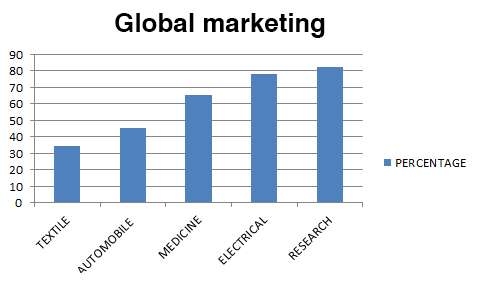
Related Societies
Europe: Portuguese Chemical Society, European Polymer Federation Congress, Swedish Chemical Society, Czech Chemical Society Royal Society of Chemistry, European Association for Chemical and Molecular Sciences, European Federation of Chemical Engineering, Royal Institute of Chemistry, Italian Chemical Society, Danish Chemical Society, Société Chimique de France, Polish Chemical Society, Norwegian Chemical Society, French Chemical Society, Bio-Process Systems Alliance (BPSA), British Plastics Federation, European Council for Plasticizers and Intermediates, European Federation of Chemical Engineering
USA: ACS Division of Polymer Chemistry, American Chemical Society Division of Polymeric Materials, Canadian Society of Clinical Chemists, American Institute of Biological Sciences (AIBS), Canadian Society for Chemical Technology, American Coatings Association, Brazilian Polymer Association, Division of Polymer Physics, American Chemical Society(ACS), American Physical Society Division of Polymer Physics (APS DPOLY), Brazilian Chemical Society
Asia and Pacific : Royal Australian Chemical Institute, Asian Polymer Association, Society of Chemical Industry, Society of Chemical Manufacturers and Affiliates, Polymer Society of Korea, Chemical Industries Association, Chromatographic Society of India, Chinese Chemical Society, Chemical Society of Japan, Indian Chemical Society, Royal Australian Chemical Institute, Royal Society of Chemistry, IAENG Society of Chemical Engineering; Indian Institute of Chemical Engineers (IIChe)

RELATED CONFERENCE-
- Symposium on Emulsion Polymerization and Functional Polymeric Microspheres (ASEPFPM 6) 07 - 10 March 2018 Fukui, Japan
- 3rd Edition of International Conference and Exhibition on Polymer Chemistry 2018 March 26-28,2018 Vienna, Austria
- 5th Global Conference on Polymer and Composite Materials (PCM 2018) April 10-13 2018 in Kitakyushu City, Japan
- 10th International Conference on Chemistry Education, May 21-22, 2018 Oslo, Norway
- Polymer Gels and Networks 2018 Prague (CZ) 17 - 21 June 2018 Czech Republic
- 4th International Conference on Polymer Chemistry June 25-27, 2018 Stockholm, Sweden
- Polymers and Organic Chemistry 2018 (POC 2018) (FR) 04 - 07 June 2018 Montpellier France
- 4th Edition of International Conference of Polymer Science and Technology June 04-05, 2018 London, UK
- 9th Global Chemistry Congress, July 23-24, 2018 Lisbon, Portugal
- 5th International Conference and Exhibition on Polymer Chemistry August 27-28, 2018 Toronto, Ontario, Canada
- Catalysis and Pyrolysis 2018 (ICCP-2018) November 05-06, 2018 San Francisco, California, USA
- 5th International Conference on Physical and Theoretical Chemistry October 11-13, 2018 Edinburgh, Scotland
- 5th World congress on Chemical Engineering and CatalysisAugust 28-30, 2018 Paris, France
- International conference on Thermosetting Resins 2018Berlin (DE) 5 - 27 September 2018
- Annual Conference on Green Catalysis and Sustainable EnergySeptember 6-7, 2018 Dubai, UAE
Conference Highlights
- Polymer Material Science and Catalyst Engineering
- Polymerization in Petroleum Refinery
- Polymerization in Flexible Plastics
- Macro Polymer and Functional Polymer
- Metallocene Catalysts
- Polymerization in Pharmaceutical Industry
- Polymers in recycled concrete in the construction industry and fire engineering
- Crystallographic Morphology Studies of Polymers by Nuclear Magnet Resonance (NMR) Spectroscopy and Raman spectroscopy
- Polymer Nanotechnology(Thin Film Flexible)
- Polymers for Catalysis and Energy Devices
- Composite Polymeric Materials
- Flexible Polymer for Dry Electrodes
- Bio Based Polymer
- Liquid Crystalline Flexible Polymer
- Electrical and Temperature Parameter of Flexible Polymer
- Polymers Market
- Polymer in Ceramics
- Polymer in Material Science and Engineering
- Advanced Nanomaterials
- Nano Sensors and Nanoscale Electronics
- Nanopolymer, Nanotubes and Nanoporous Material
- Nanobiotechnology and Nanomedicine
To share your views and research, please click here to register for the Conference.
To Collaborate Scientific Professionals around the World
| Conference Date | September 06-07, 2018 | ||
| Sponsors & Exhibitors |
|
||
| Speaker Opportunity Closed | Day 1 | Day 2 | |
| Poster Opportunity Closed | Click Here to View | ||
Useful Links
Special Issues
All accepted abstracts will be published in respective Our International Journals.
Abstracts will be provided with Digital Object Identifier by






































